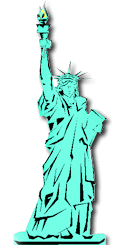|
APPENDIX 9
SEVEN WAYS TO PORTRAY COMPLEXITY
(Front Material Only. The complete document
requires 39 pages.
Given here are the cover page, the Contents page, and an Abstract)
John N. Warfield
George Mason University
MS 1B2
Fairfax, Virginia 22030-4444

"sum, ergo cogito"
This document was prepared specifically to supplement and support a
presentation at the
George Washington University Notational Engineering Laboratory,
February 28, 1996
© John N. Warfield, 1996
CONTENTS
| Abstract |
3 |
| Seven Ways to Portray Complexity |
4 |
| INTRODUCTION TO COMPLEXITY |
|
| Abstract |
5 |
| ASchools of Thought About Complexity |
6 |
| Abstract |
7 |
| The Behavior-Outcomes Matrix |
8 |
| Summary Data from Applications on Complexity Measures |
9 |
| STRUCTURAL FIELDS |
|
| Symbolizing a Four-Level Inclusion Hierarchy (Quad) |
10-12 |
| Options Field for fulfillment of anticipated needs of children
and their families |
13-15 |
| Attributes Field for Analytical Powertrain |
16-21 |
| Problems Field for Analytical Powertrain |
22-27 |
| STRUCTURAL PROFILES |
|
| Options Profile for Planning an Interactive Management Workshop |
28 |
| ELEMENT-RELATION DIAGRAM (based on Friedman Constraint Theory) |
|
| (Photocopy of Page 55 from Friedman Dissertation (UCLA, 1967) |
29 |
| PARTITION STRUCTURE |
|
| Lattice of Partitions of a three-element set |
30 |
| TOTAL INCLUSION STRUCTURE |
|
| Lattice of Subsets of a 3-element set |
31 |
| Lattice of Communication Alternatives |
32 |
| DELTA CHART |
|
| DELTA Chart of Options Profile Methodology |
33 |
| ARROW-BULLET DIAGRAMS |
|
| Problematique for Industrial Development in the
State of Nuevo Leon, Mexico |
34 |
| Superimposed Plausibility Structures for Strategic Planning
Purposes in Mexico |
35 |
| Problematique for Joint Planning and Execution Process (JOPES) |
36 |
Problematique for Policy-Oriented PhD Research (scores and shading)
developed by PhD students at George Mason University |
37 |
|
|
| REFERENCES |
38 |
ABSTRACT
SEVEN WAYS TO PORTRAY COMPLEXITY
John N. Warfield
George Mason University
Prose alone is inadequate to portray complexity. Mathematics is often unavailable because mathematical language is restricted to a small percent of the population.
For this reason, language components comprised of integrated prose-graphics representations enjoy unique potential for representing complexity.
Because of the desirability of taking advantage of computers to facilitate the development and production of such integrated representations, it is best if the prose-graphics representations are readily representable in computer algorithms, even if their utility for general communication is limited. Mappings from mathematical formats to graphical formats can often be readily done, although manual modification of graphics for readibility may be necessary.
The following specific graphical representations have proved useful in representing complexity:
- Arrow-Bullet Diagrams (which are mappable from square binary matrices, and
which correspond to digraphs)
- Element-Relation Diagrams (which are mappable from incidence matrices, and
which correspond to bipartite relations)
- Fields (which are mappable from multiple, square binary matrices, and which
correspond to multiple digraphs)
- Profiles (which correspond to multiple binary vectors, and also correspond to
Boolean spaces)
- Total Inclusion Structures (which correspond to distributive lattices and to
power sets of a given base set)
- Partition Structures (which correspond to the non-distributive lattices of all
partitions of a base set)
- DELTA Charts (which are restricted to use with temporal relationships, and
which sacrifice direct mathematical connections to versatility in
applications)
Each of these will be described briefly (detailed descriptions are given in the References), and at least one example of the use of each in an application will be given. All structures from applications were developed participatively by persons intimately engaged with the relevant issues.
May, 1996

|